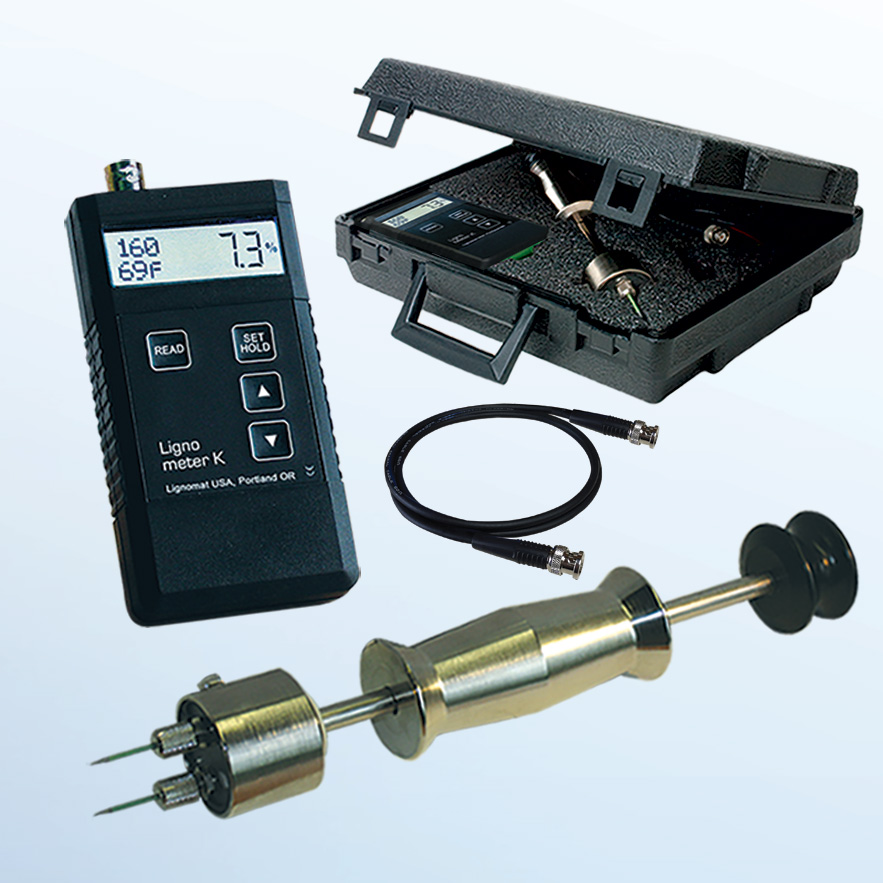Exactly How a Moisture Meter Can Boost Your Building And Construction Projects and Avoid Damages
Exactly How a Moisture Meter Can Boost Your Building And Construction Projects and Avoid Damages
Blog Article
Comprehending the Importance of a Moisture Meter in Avoiding Mold and Water Damages in Your Home
In the realm of home maintenance, the presence of dampness can often be a quiet yet awesome foe, qualified of creating prevalent mold and mildew growth and dangerous water damage if left unchecked. Comprehending the value of a moisture meter in this fight is not simply an alternative however a critical need.
Importance of Moisture Detection
Reliable moisture detection methods are important for protecting homes and avoiding prospective mold and mildew development and water damage. Dampness can permeate into various building products, bring about structural problems and health and wellness dangers. By using a dampness meter, residential property proprietors can proactively determine areas prone to excess wetness, enabling for timely treatment and reduction approaches.
Moisture meters give exact readings of moisture degrees in various products such as drywall, concrete, and timber. This information assists in identifying areas of concern, also in hard-to-reach or concealed areas. Early detection of dampness build-up enables prompt fixings or modifications to avoid further damage.

How Moisture Meters Work
Dampness meters play an essential role in the aggressive recognition of excess moisture, assisting in the prevention of potential mold and mildew growth and water damages by supplying accurate readings of moisture degrees in various structure materials. These gadgets work based upon different concepts, depending on their type. Moisture Meter. Pin-type dampness meters, for circumstances, have two pins that pass through the product to measure the electrical resistance in between them. When moisture exists, it improves the product's conductivity, resulting in a reduced resistance reading. Pinless wetness meters, on the various other hand, use electro-magnetic sensors to scan the product without causing damages. These sensing units release electromagnetic signals that pass through the product and measure the dielectric residential or commercial properties, showing wetness web content. Some advanced wetness meters pin both combine and pinless innovations for thorough moisture detection. Comprehending just how moisture meters function is vital for exact and prompt wetness degree analyses, making it possible for efficient safety nets against mold and water damage.
Finding Early Caution Indications
Upon first inspection of a residential property, recognizing subtle signs of excess dampness becomes important in the very early discovery of potential mold growth and water damage. Water spots can signify leakages or infiltration, while peeling paint or wallpaper may be a result of wetness jeopardizing the attachment of these products to the surface. Additionally, a rise in allergy signs or respiratory system problems among passengers might recommend the visibility of mold and mildew due to excess dampness.
Preventing Mold Growth
Recognizing early caution indicators of excess wetness within a building not just allows timely detection of possible mold and mildew growth and water damages yet additionally offers as an aggressive procedure in stopping the proliferation of mold and mildew. To successfully avoid mold development, it is important to deal with any kind of resources of moisture without delay. This can consist of repairing leakages in pipes, roofs, or home windows, guaranteeing appropriate air flow in moist locations like kitchens and washrooms, and utilizing dehumidifiers in high-humidity spaces. Regularly evaluating and keeping the building's plumbing, roofing, and gutters can additionally help in protecting against water moved here invasion that can lead to mold development.
Along with resolving moisture resources, maintaining interior moisture degrees listed below 60% can significantly prevent mold development. Appropriate air flow, appropriate insulation, and utilizing air conditioning unit or fans can help control indoor humidity levels. Keeping an eye on wetness levels in areas prone to dampness, such as basements and crawl rooms, making use of a dampness meter can additionally assist in very early discovery of raised wetness levels and potential mold and mildew development. By taking aggressive actions to prevent excess moisture and mold and mildew development, homeowners can safeguard their home and indoor air quality.
Advantages of Regular Tracking
Regular surveillance of wetness degrees in a residential or commercial property can play an essential duty in preserving a healthy and balanced indoor setting and stopping potential mold and mildew and water pop over to these guys damage. By regularly inspecting moisture levels, home owners can identify any type of concerns immediately and take necessary activities to avoid mold and mildew development and water damage. Among the essential advantages of routine surveillance is early detection. By identifying and resolving high moisture levels beforehand, house owners can intervene before mold and mildew has the chance to create and spread. This proactive technique can save both money and time in the future by preventing considerable mold and mildew remediation and repair costs.
Moreover, regular monitoring permits home owners to track patterns and fads in wetness levels in time. By establishing a baseline and monitoring changes, individuals can identify any kind of locations of worry or prospective vulnerabilities in the home's structure. This data-driven approach makes it possible for targeted treatments and maintenance initiatives to attend to underlying problems before they rise into even more considerable problems. Inevitably, the regular monitoring of dampness levels empowers home owners to secure their residential or commercial property, safeguard their wellness, and preserve the honesty of their indoor setting.

Final Thought

By using a dampness meter, residential or commercial property owners can proactively determine areas prone to excess wetness, allowing for timely intervention and mitigation strategies.

Keeping track of moisture levels in locations vulnerable to wetness, such as cellars and crawl spaces, using a moisture meter can additionally assist in very early detection of elevated dampness degrees and prospective mold development. (Moisture Meter)
Report this page